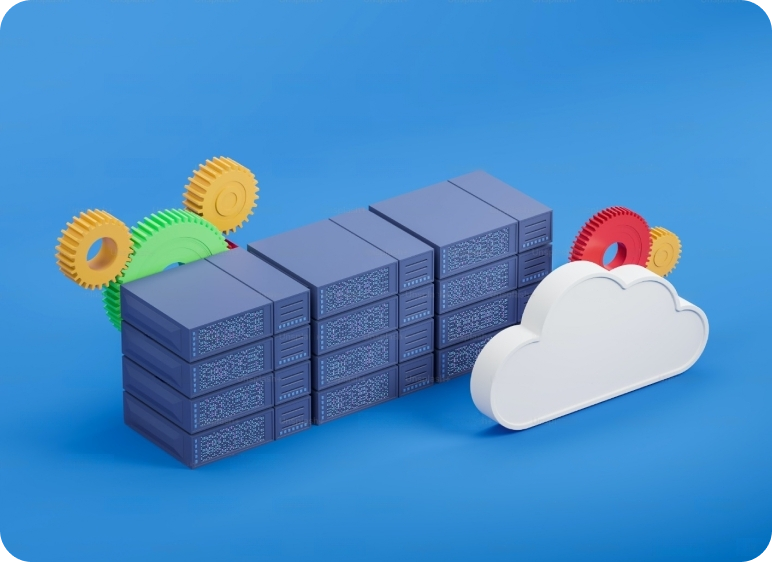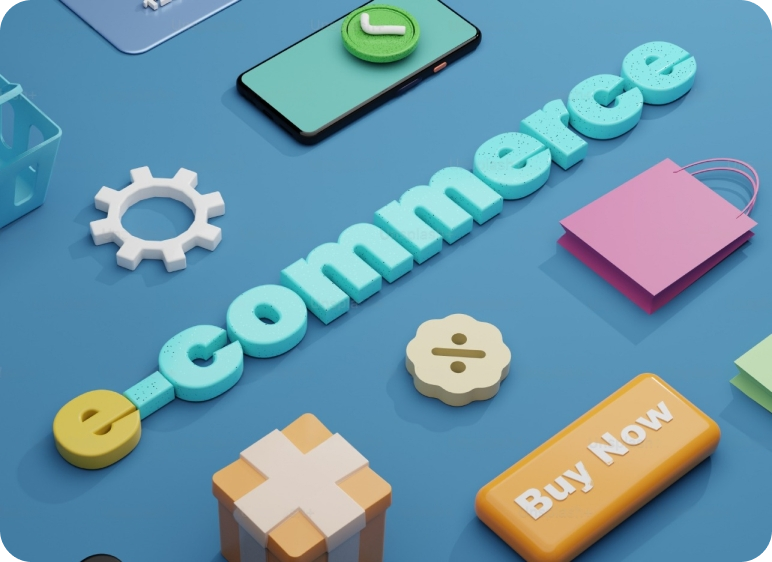Summary: No company wants to invest in a product only to find that there is no demand for it. The solution to developing novel products is an MVP. A common launch method that has been extremely successful for household companies like Dropbox, Figma, Uber, etc. is the development of a Minimum Viable Product (MVP). Make an MVP first, rather than rushing to code the next great thing. Decide on your story, and then describe what makes it special. What services are provided, and what issue are you trying to resolve? Here is a step-by-step process for creating MVPs.
It was the year 1999. A young man went to a local store in search of a specific pair of shoes but was unsuccessful. He was frustrated, so he had the idea to sell shoes online, and that is how it all began. A Minimum Viable Product (MVP) was first proposed. He created a simple website as opposed to carrying out extensive and expensive market research. He then went over to a shoe store, took pictures of the shoes, and uploaded them to his website. He bought the shoes from the shop and sent them out after getting the order.

It was a fantastic way to test a business idea, despite the fact that he lost money on every sale. He began developing his idea into a fully operational firm once he deduced that clients were eager to buy shoes online. As a result, Nick Swinmurn was able to build Zappos, which Amazon ultimately purchased for USD 1.2 billion.
The strategy Nick adopted is now known as MVP Development.
An MVP (Minimum Viable Product) is what?
A minimally viable product, or MVP, is a ready-to-launch version of a product that supports the essential elements that define its value proposition. It is designed with the goal of facilitating a quicker speed to market, luring early adopters, and achieving product-market fit from the start.
The MVP concept is thought of as an amalgamation of the “minimum essentials” – something with the essential elements to satiate the early clients. Getting feedback that will aid in the creation of future products is part of the follow-up process. The MVP of a new product is the one that enables a team to gather the most verified learning about customers with the least amount of work, according to Eric Ries, the man who popularised the idea.
The “least effort” does not, however, equate to an MVP being the “minimum” functionality that should be created. It must also be “viable,” which implies that while designing, keep in mind that the MVP must be dependable, usable, and mindful of user needs. This creates the framework for gathering user feedback to enhance the next iteration and determine the viability of the product.
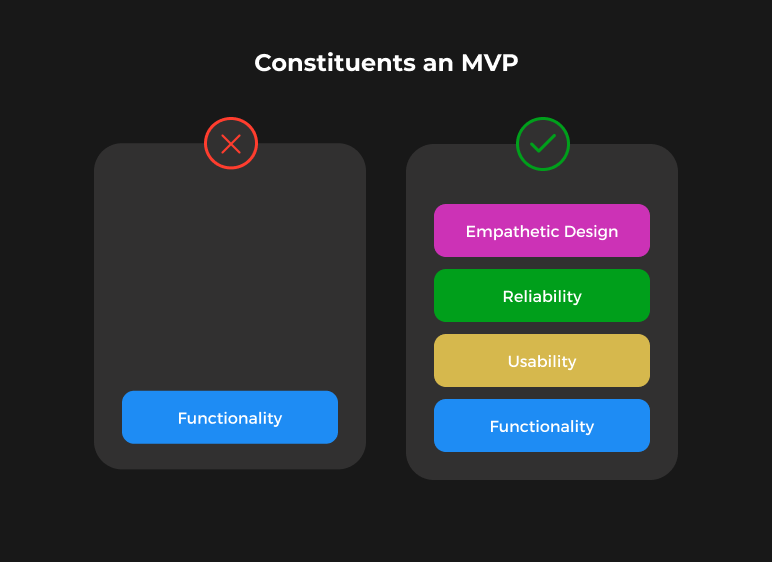
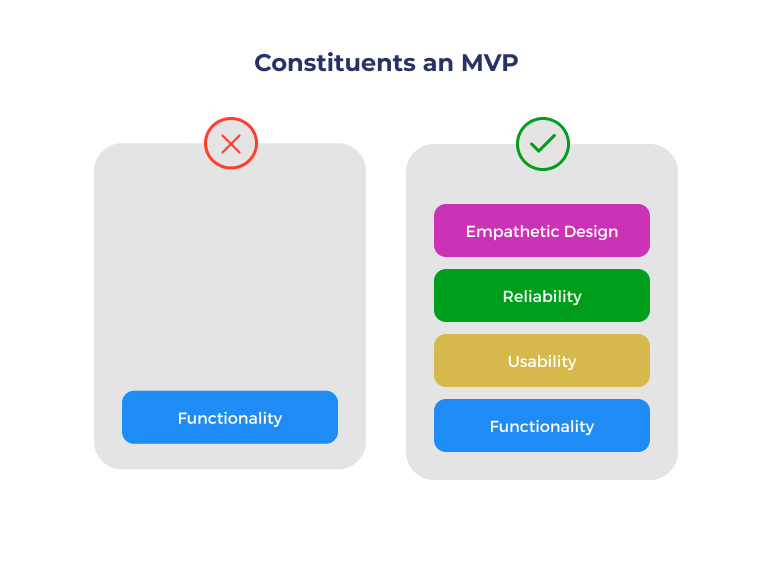
The goal of an MVP The goal of creating an MVP is to swiftly and cheaply launch a product based on a proven concept. Businesses can get user feedback for the core product using MVP development solutions and incorporate it into subsequent revisions. Finding the correct audience, pulling ideas based on experience, and saving time are all possible with an MVP. Statistics Highlighting the Need to Create an MVP
29% of businesses fail due to money problems Proper scaling allows startups to expand 20 times more quickly than hasty scaling does. The advantages of starting the new product development process with an MVP are clearly demonstrated by these statistics. There are more motivations for an MVP product development business to create a Minimum Viable Product, though: making a first model that serves as a discussion starter and offers distinct visual points of reference The model is tested with actual users after the first idea approval process has been completed. This aids in comprehending potential problems with the merchandise. A crucial and inspiring step towards developing a fully-fledged product is beginning the actual development process after devoting months to enhancing and perfecting the software idea.
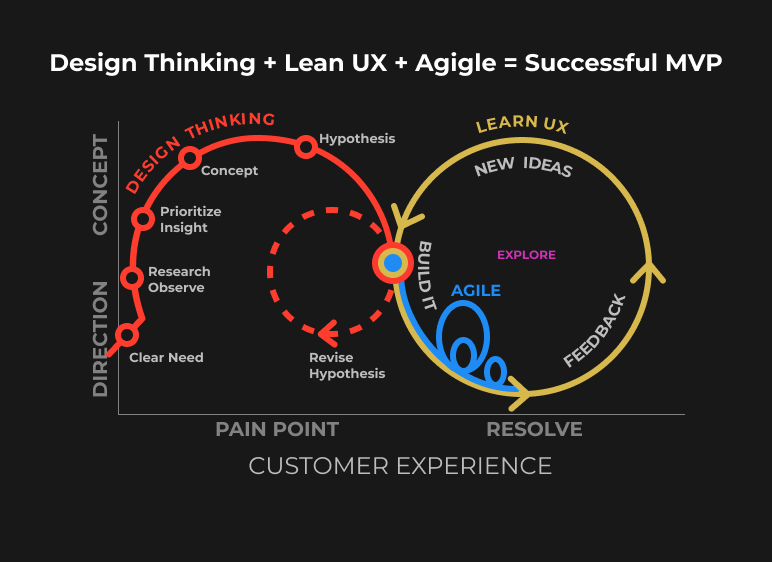
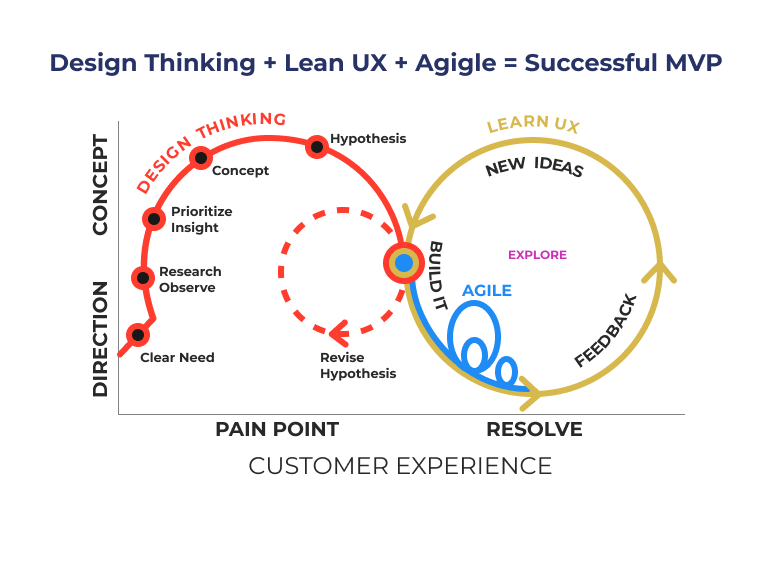
While building a mobile app, a business must understand that the whole idea of building an MVP is divided into two main parts:
- Business and Marketing: An MVP allows the business to launch a survey to identify the best marketing approaches and advertising platforms for the advancement of the product
- Proof of Concept: By building an MVP, the business will gain critical technical insights from necessary programming and designing a minimum feature set, which, in turn, will help them make their app unique
How should a Minimum Viable Product be constructed?
On Quora, questions like “How unpolished can my minimum viable product be?” are popular; according to Hackernoon, “The MVP is Dead. The RAT is still alive. The autocomplete suggestion from Google reads, “MVP is dead.”
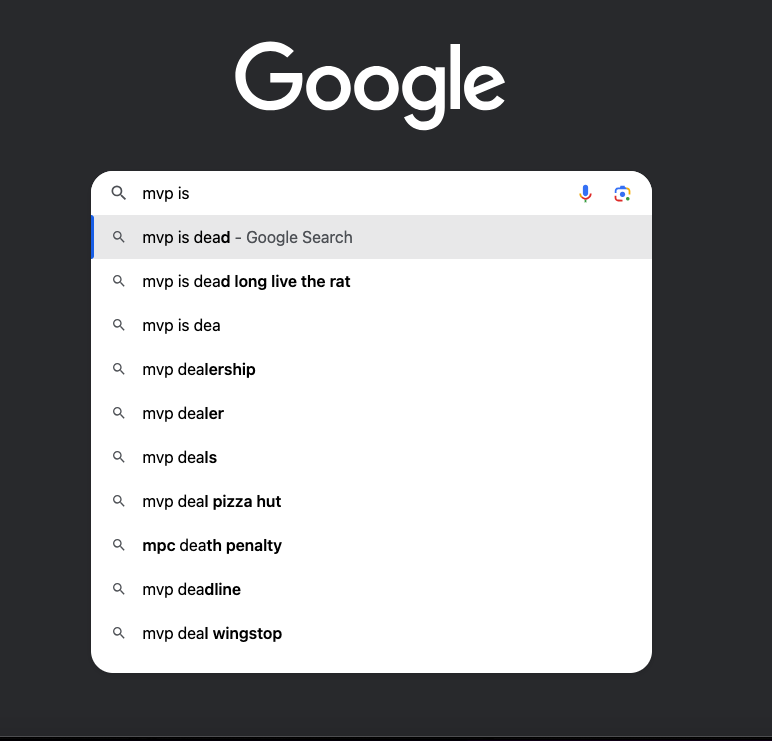
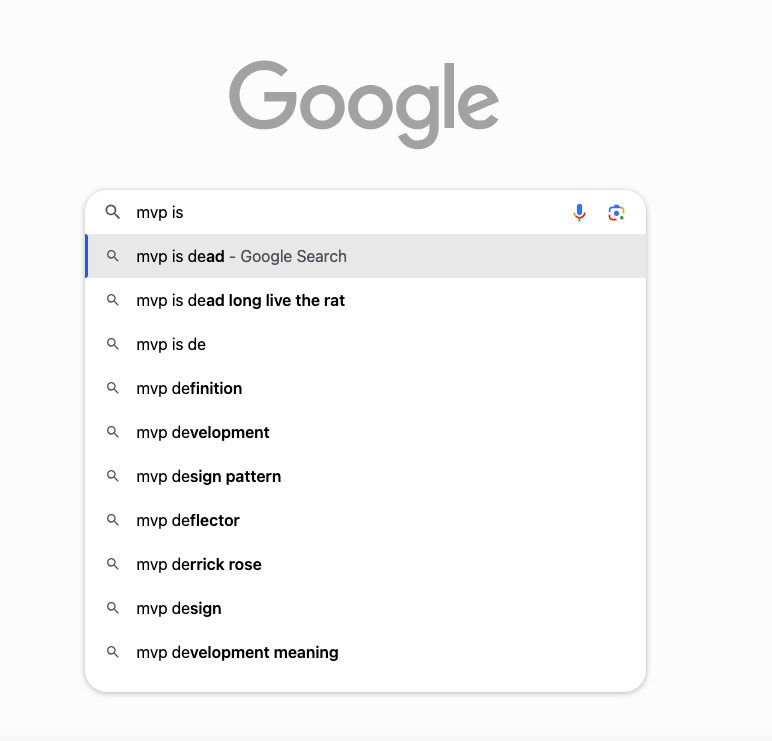
American businessman Reid Hoffman once remarked that if your first product does not make you feel humiliated, you launched it too late. Hoffman’s advice, however, caused many company founders, particularly first-time business owners, to concentrate primarily on “M” and almost disregard “V.” Instead of producing outstanding items, it produced below-average ones.
For instance, startups will create a website with a free sub-domain and little to no content and call it a startup. They label it a failed MVP and begin searching for a remedy to the alleged MVP problem when it is unable to draw in customers. The fundamental problem is a lack of knowledge about the procedures needed to produce an MVP. To properly construct an MVP, all the procedures must be followed:
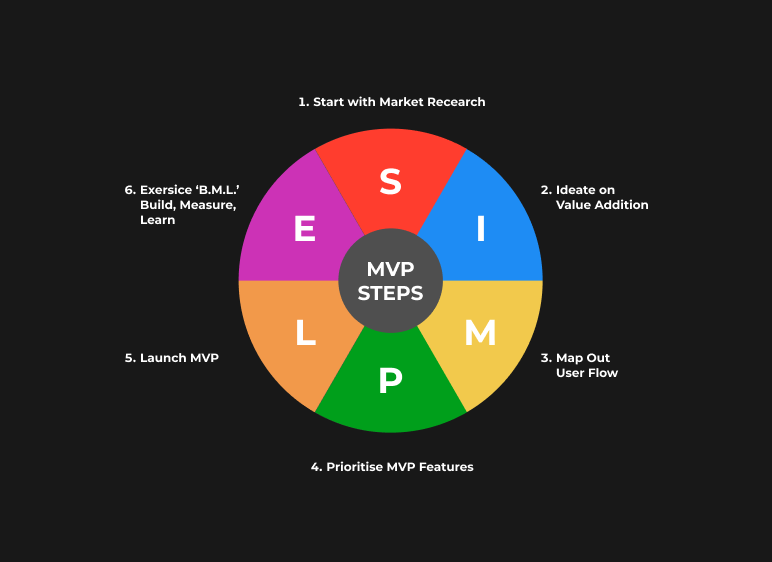
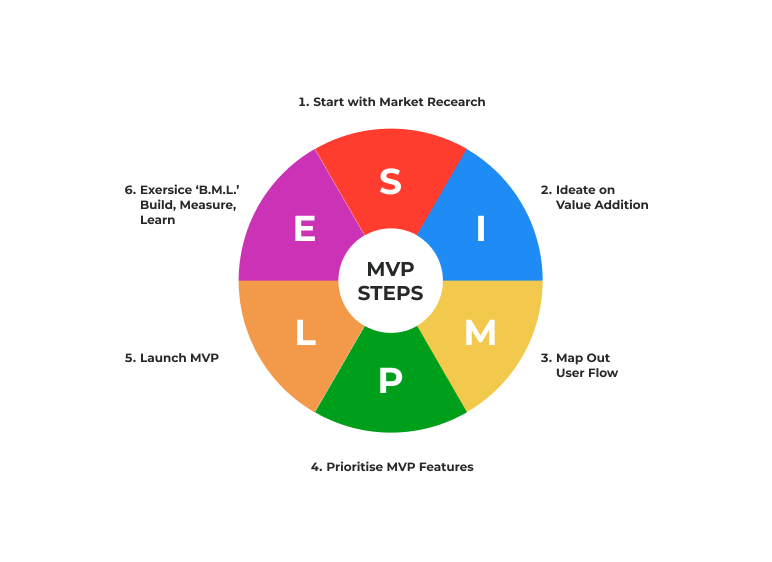
Step 1: Conduct market research first
Ideas occasionally don’t match what the market requires. A business should make sure that a concept will satisfy the needs of the target users before starting the MVP Development process. Conducting surveys would be beneficial for any firm. A company’s chances of success are higher the more information it has. Don’t forget to keep an eye on the competition’s offerings as well as ways to make your product concept stand out.
Not only must you know what to do, but you must also perform it to the best of your ability. (W. Edwards Deming)
According to a CB Insights survey, “lack of market need” was the leading factor in startup failure. Customers won’t use a product to find a solution if it doesn’t solve the issue.
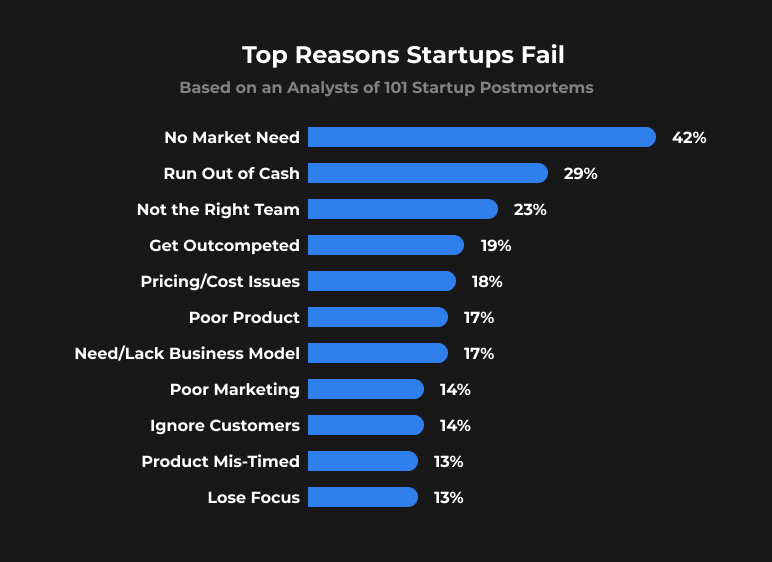
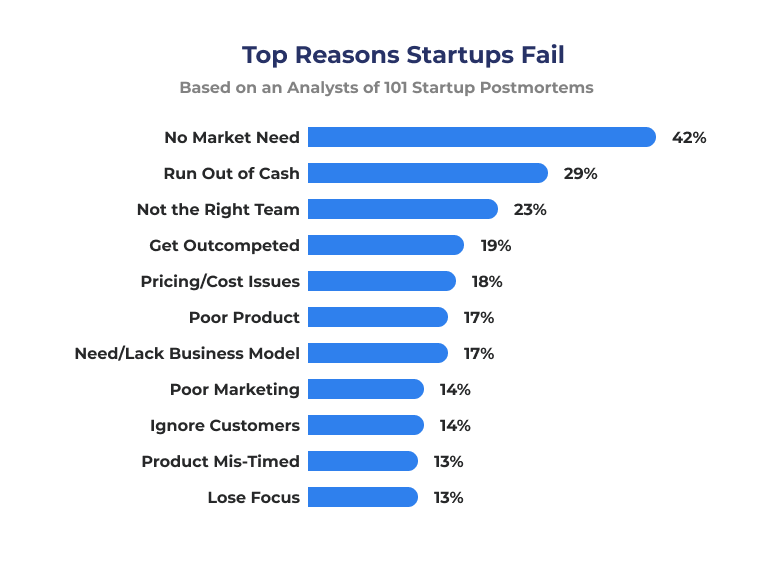
Step 2: Construct Value Addition Ideas
What benefits does the new product provide for customers? How does it help them? Why would people purchase the item? The answers to these queries can be used to specify the value proposition of the app. The crucial estimates for the product should also be obvious. The product must provide value to users in the simplest form possible, as the term MVP suggests. Outline the users first, then create the MVP around their requirements.
Step 3: Identify the user flow
An essential MVP step is the design phase. As a result, you must create the app with user convenience in mind. The company must consider the app from the consumers’ point of view, from installing it through completing the last step, such as ordering or receiving a delivery. Additionally, user flow is crucial since it makes sure nothing is overlooked while considering the future success of the product and the enjoyment of its users.
To identify the steps of the process, the user flow must be defined. It is crucial to outline the steps required to accomplish the main goal. Instead than concentrating on features, the focus should be on fundamental activities like identifying and purchasing the goods or managing and receiving orders.
These are the objectives that the product’s end consumers will have when they use it. It is time to outline each of these procedure stages before defining its specific components.
Step 4: Sort MVP Features by Priority
Prioritise all the features that the MVP will support at this time. What do users want? is a good question to consider while deciding which MVP features to prioritise. Does this product provide them with any advantages? Next, group the remaining MVP features into three priority categories: high, medium, and low. Arranging these features in the product backlog according to importance is a further
crucial step.
Now is the time to start creating an MVP. A company can develop an MVP prototype to see how its future product would seem. Fun fact: Steve Jobs lost his job as a result of skipping the prototyping phase while creating the Apple Lisa. The outcome was disastrous because it was unable to generate a sizable amount of sales.
Step 5: Launch MVP in step five
A company can develop the MVP once it has determined on the key characteristics and discovered what the market wants. Keep in mind that an MVP must still satisfy the needs of the consumer and is not inferior to the final product in terms of quality. As a result, it must be user-friendly, interesting, and appropriate. Products typically don’t succeed because they don’t better satisfy customers’ wants than competing options. author of The Lean Product Playbook, Dan Olsen
Step 6: Exercise ‘B.M.L.’ – Build, Measure, Learn
Everything is a step in a process: outline the work’s parameters first, then advance the product to the development phase. The product needs to be tested after the development process. Even though the product hasn’t yet been issued, Quality Assurance engineers perform the initial testing stage to raise the product’s quality.
Review everything once you’ve released the MVP. Customers’ opinions on the release must be sought out by the business. Based on their opinions, they can assess the market acceptance and competitiveness of their products.
Five Development Errors to Avoid When Creating an MVP
Darwin’s “Survival of the Fittest” hypothesis provides a suitable explanation for the fiercely competitive digital commerce environment of today. Business executives can evaluate the worth of their product without investing a lot of money or time thanks to the MVP development method. To build a successful MVP, you must, however, avoid a few development blunders that could result in a severe business catastrophe.
1. Picking the Wrong Issue to Address
The first stage is to decide whether the product is worth making before devoting months of effort to its development. A company should ask itself these questions after analysing the suffering on which they will base their start-up: For whoever is this?
What issue will this solution address? Is the suggestion that has been made a successful remedy for that issue? They won’t succeed in capturing anyone if they aim for everyone. Start by locating the doors, then begin key construction. A beautiful key that cannot open the proper door is of no use. After identifying the correct target market, if the second question receives a favourable response and the third question receives a confident “Yes,” the firm has successfully juxtaposed the problem and the solution, and it is now time to begin pressure-testing their concept.
2. Ignoring the Prototyping Stage
Consider constructing an automobile without using a visual model. You realise how impossible it is. It can be difficult to begin the development process without first establishing the requirements. The process of turning an innovative concept into a finished product or service is an essential component of product development. The prototype, which concentrates on the “How” aspect of the product, sits between the concept and the finished product.
Consider prototyping as an MVP for creating an MVP: not a completely functional version, but one that can aid in visualising the user experience. The ideal prototype need to be just right. People won’t think the prototype is an actual product if the quality is too poor. If the standard is too high, you’ll spend all night working and still fall short. You must Goldilocks calibre. Just right—not too high, nor too low. – Daniel Burka, Design Partner at Google Ventures
3. Choosing the Wrong Persona Segment to Target
Products typically don’t succeed because they don’t better satisfy customers’ wants than competing options. author of The Lean Product Playbook, Dan Olsen
When a company has an MVP prototype ready, it’s time to test and validate it. At this point, it’s important to gather feedback and opinions from the intended audience. It is crucial to keep in mind that not every user is a potential target. Unless they are potential consumers, do not involve friends or family during this stage. Avoiding unnecessary comments that can cause customers to reject the good or service for the wrong reasons is crucial.
The Value of Feedback When Creating an MVP
It is crucial to understand that the end users are the ones who may identify gaps and redundancies. A company can begin developing the product after gathering consumer feedback. After adjustments have been made, the quality will once more be tested, learned from, and measured. Up to the finished product, this process is repeated.
Example: After the prototyping phase, Nike discovered through comments from potential customers that it was challenging for them to locate the call to action (CTA). Thanks to the feedback they obtained during prototyping, they were able to avoid producing a product that people would find challenging to interact with.

4. Improper Development Technique
There is a method; do your best to find it.
Theodore A. Edison
Jumping immediately into the MVP development process without understanding the necessary development methodology is one of the most frequent reasons for businesses to quit projects in the middle of them. This is one of the main causes for the failure of nine out of ten startups. Agile and waterfall development methodologies are typically applied to MVP product development. Agile and waterfall are often the two methods used for MVP product development. Agile product development gives better outcomes and is more effective than Waterfall (Traditional Method). Agile, which emphasises incremental and iterative development, delivers speed to market and a flexible strategy.
5. Misinterpretation of Quantitative and Qualitative Feedback
Data from the target users can be gathered in two ways: qualitative feedback and quantitative input. However, if one is overused and the other is ignored, the business may be unable to draw the proper conclusions. To reach a well-rounded conclusion that can guide wise improvements, it is crucial to strike the correct balance between the two sorts of input because they each play different functions. Findings regarding the calibre and usability of the aspects of the product or service make up qualitative feedback.
By assisting developers in the analysis of the precise faulty UI elements, it immediately evaluates the system’s usability.
Metrics that indicate how easy or difficult the activities were to complete make up quantitative feedback. It evaluates the design’s usability in an indirect manner. Such feedback may be based on the user’s efficiency with a particular task (e.g., success rates, mistakes made, etc.).
| Concern | Qualitative Feedback | Quantitative Feedback |
|---|---|---|
| 1.Questions answered | Why? | How many and how much? |
| 2.Goals | Both formative and summative: Inform design decisions Identify usability issues and find solutions for them | Mostly summative: Evaluate the usability of an existing site Track usability over time Compare the site with competitors Compute ROI |
| 3.When it is used | Anytime: during the redesign, or when you have a final working product | When you have a working product (either at the beginning or end of a design cycle) |
| 4.Outcome | Findings based on the researcher’s impressions, interpretations, and prior knowledge | Statistically meaningful results that are likely to be replicated in a different study |
Combining qualitative and quantitative input is the best course of action. This is referred to as “Triangulation Feedback” and it defines the procedure of obtaining data for a comprehensive, accurate interpretation that takes a variety of elements into account. This strategy increases the likelihood of reducing the risks of product failure. The developer will be more optimistic about the success of the project if the results of both feedback techniques are consistent.
How to Build an MVP with the Right Market in Mind
It just makes no sense to develop beautiful products for an ugly market group. Daniel Adams
Consider how you might market an air conditioner as a minimal viable product in Antarctica. This is a difficult task. The same principle holds true for companies trying to develop an MVP. No matter how great the product or service is, it will fail if the company can’t figure out how to discover the MVP’s perfect target market.
The seductive assumption that “everyone” will rush to buy their products or sign up for their services is the starting point for an MVP for most entrepreneurs. They quickly become a
source of information for numerous studies and research projects. For instance, according to this HBR analysis, inadequate market segmentation caused 30,000 new product launches to fail in 85% of cases.
1. Evaluate the Market
To understand who the product will compete with, it is crucial to conduct extensive competition research. Building an MVP that doesn’t currently exist in the market is essentially impossible. Even if a business has original ideas, it will still be entering a crowded and established market.
They must therefore determine how to position their Minimum Viable Product in a market where their rivals are already engaged in what they are trying to do. The startup will need to conduct market research on its rivals to learn this. Consider their advantages and disadvantages. Determine who their target market is and what they are being offered to them. The startup has two options: they can pursue the same target market that their rivals selected, or they can focus on a demographic that their rivals might have neglected.
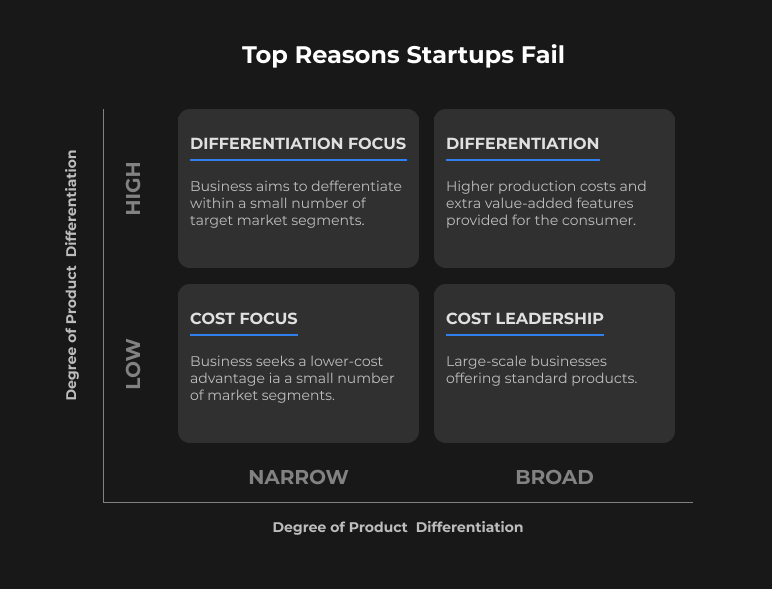
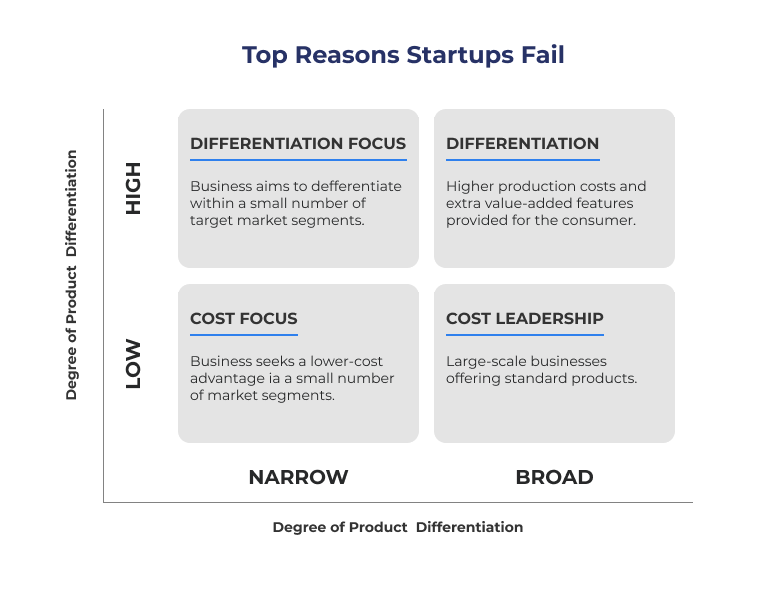
Use the photo up top as a guide. Any startup can compete successfully in a particular industry by choosing one of four main strategies: cost leadership, differentiation, cost focus, or differentiation focus.
2. Separate the customer base by geography
The startup’s next job is to concentrate on geographic segmentation after identifying the ideal consumer base for the MVP. This is a useful tactic employed by companies to familiarise themselves with the location-based characteristics that make up a particular target market. When developing an MVP, understanding the location of the appropriate consumer base might be absolutely crucial.
What good is starting the search in Southern California if the minimal viable product is a winter jacket, for example. Here, the winters can range from mild to warm.
For better and more effective marketing, it is possible to address specific demands and cultural traits of target consumers in different geographic regions. Finding the answers to important questions like these will help the startup better build their MVP if they are aware of the geographic location of their target consumer.
Key Questions to be Asked when Building an MVP
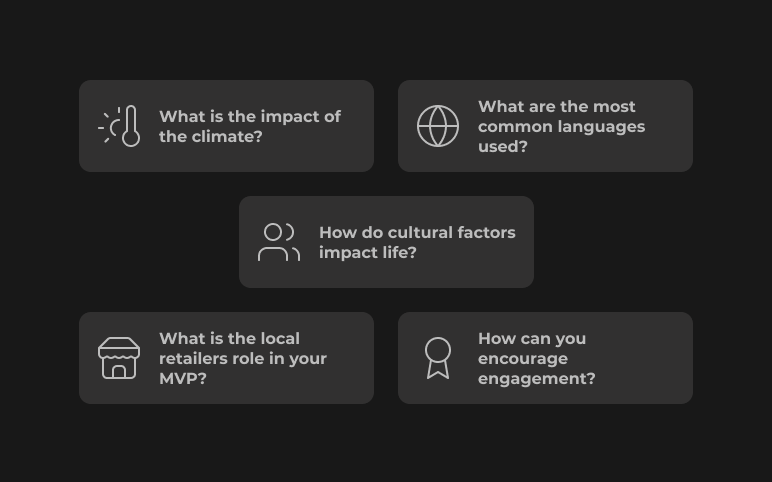
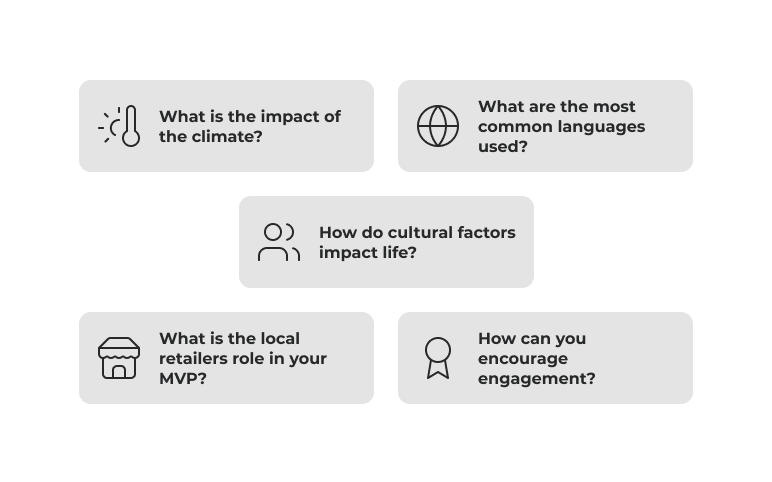
Use the photo up top as a guide. Any startup can compete successfully in a particular industry by choosing one of four main strategies: cost leadership, differentiation, cost focus, or differentiation focus.
3. Determine the purpose of a purchase
Understanding the reasons behind the customer’s purchase comes next after geographically segmenting the customer base. This will enable the startup to position its MVP with absolute precision. To accomplish this, conducting a survey is the simplest method. Create pertinent questions that revolve around the aforementioned issues while keeping in mind the Minimum Viable Product. Once completed, a survey can be conducted in a number of ways, depending on the budget.
Taking Success Measures After Developing an MVP
There are various methods for accurately predicting a product’s future success. Here are some of the best, most reliable ways to gauge an MVP’s success:
1. Recommendation
A useful metric to forecast success is traffic. Interviewing potential clients is another method of measuring success. Ask the customer their opinion after outlining the issues they are currently experiencing or are expected to experience.
2. Commitment
Engagement enables a startup to gauge both the present and future worth of the product. Based on input, engagement aids in improving the user experience.
3. Register
Sign-ups offer a practical means of determining user interest. Depending on how much interest there is in the goods, they might also translate into income.
4. Improved Client Evaluations Based on Feedback
User interest in the app may be seen by looking at the number of downloads and launch rates. The more downloads a software receives, the lighter it will be.
5. The share of users that are active
The success of an MVP is determined by a variety of criteria in addition to download and launch rates. It is crucial to examine user behaviour and frequently review the ratings of engaged users.
6. Client Acquisition Cost (CAC)
It is critical to understand how much it costs to get a paying client. This enables a firm to monitor the effectiveness of its marketing initiatives and determine whether any adjustments are necessary.
CAC = Money spent on traction channel / Number of customersacquired through the channel.
7. Total Amount of Payin
Keep track of the goods that generate income and be aware of the average revenue per user (ARPU). Total daily revenue divided by the number of active users is known as ARPU.
8. CLV, or Client Lifetime Value
CLV shows how long a user stays on an app before removing it or ceasing to use it.
CLV = (Profit from a user *App usage duration) – Acquisition cost
9. Churn Rate
Churn displays the quantity or proportion of users who have removed or stopped using the app.
Churn = Number of churns per week or month / Number of users at
the beginning of the week or month.
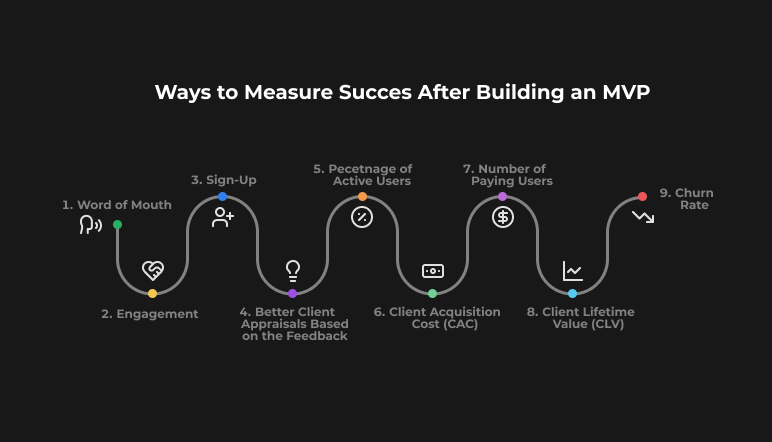
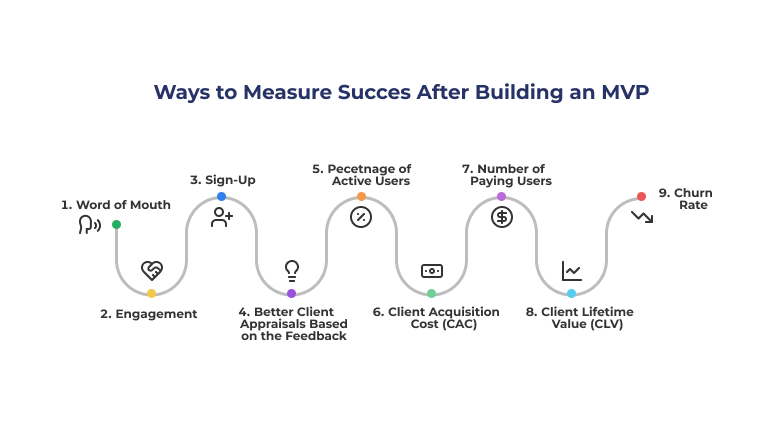
Frequently Asked Questions
1. Which features ought to be present in a Minimum Viable Product (MVP)?
The term “minimum viable product,” or “MVP,” refers to a product with just enough features to entice early users and validate a product concept at the start of the development cycle. The MVP can help the product team in sectors like software receive customer feedback as soon as possible so that the product can be enhanced and iterated.
2. How do I get ready for my product’s MVP?
With these steps, you can begin your MVP adventure. – comprehensive market research What benefits does your product provide? your user flow; optimise
Give your audience-helping features first priority.
3. What distinguishes a Minimum Viable Product from a prototype?
A prototype is a rapid technique to test the core concepts and presumptions of the product. An MVP, on the other hand, is a functional version of the product that only includes the essential features. It is perfect for testing because it produces feedback and useful data while requiring the least effort and money investment at this point.
4. How much time should go into developing an MVP?
Building an MVP typically takes 3-5 months, depending entirely on the feature list, level of design complexity, and number of resources required.
Frank Robinson, the CEO of SyncDev, coined the phrase “minimum viable product” in 2001, but Eric Ries popularised it in his book The Lean Startup in 2011. The MVP, a crucial stage in the product development process, serves as a guide to determine whether a product development idea should be explored. A fresh idea or concept’s initial workable or “saleable” version is what is meant by its fundamental form.
The strategy aims to release a product on the market with the fewest features possible, with the lowest risk, in the shortest amount of time, while still having enough functionality to attract customers. The developers will either add new features, give it a fresh spin, or create a brand-new product after considering the input.
What is the least-risk method to test assumptions or conduct small experiments testing assumptions?
Launch a prototype to test the market and take feedback.
That is, build a minimum viable product or the MVP.
The minimal viable product is the iteration of a new product that enables a team to get the most verified customer learning with the least amount of work.
Ries Eris



